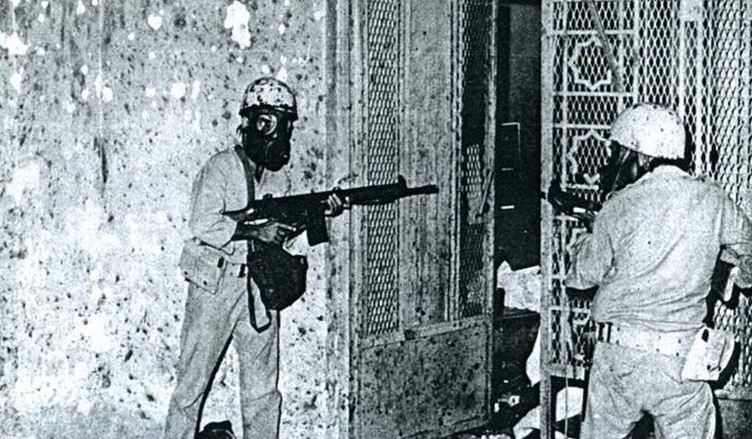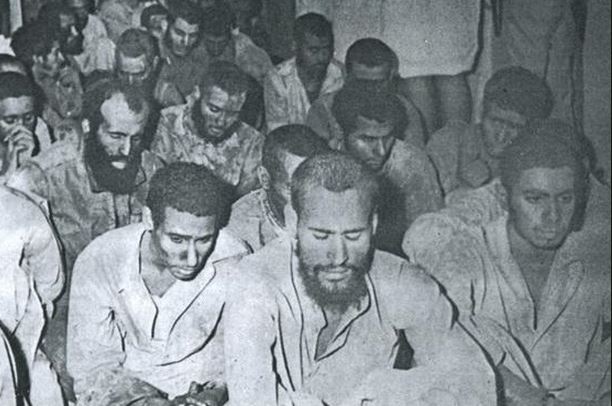On 20 November 1979, the Great Mosque of Mecca, Islam’s holiest site, where the Kaaba is located, was the scene of an attack that shook the Muslim world.
An Islamist militant group led by Juhayman al-Otaybi, took control of the mosque in an attempt to overthrow the Saudi monarchy.
Siege of Calamity
Saudi authorities completely censored the suicide attack. No film footage. No official publicity. But it marked a turning point in the development of modern Islamic terror and is one of the most important events in modern history.
The attack is known as the “Siege of Calamity”. It not only shook Saudi Arabia and the Muslim world, it also had profound and long-lasting consequences for global terrorism.
It radicalised Islamic movements and strengthened conservative forces in Saudi Arabia. It contributed to the spread of anti-Western ideology that later shaped groups like Al-Qaeda. It showed how religious extremism can be combined with political violence and set a precedent for future acts of terrorism.
Islamic justice
Juhayman al-Otaybi was a Saudi Islamist from the Otaibah tribe. He led a group of 600 heavily armed militant Muslims who believed that the Saudi monarchy had deviated from the true path of Islam after it began co-operating with Western powers – particularly the US.
Al-Otaybi declared his brother-in-law Muhammad Abdullah al-Qahtani as the awaited Mahdi – a messianic saviour figurewho will bring Islamic justice to the world.
First day of the Islamic year 1400
In the early morning of 20 November, during the celebration of the first day of the Islamic year 1400 in the Islamic calendar, the group took control of the mosque, where 50,000 Muslims were gathered for morning prayers.
They took hostages and barricaded themselves in the mosque. Through the mosque’s loudspeakers, Al-Otaybi proclaimed his demands: Stop all oil exports to the US, expel all Western experts from the Arabian Peninsula and dismantle the Al Saud dynasty.
The Saudi government declared that instead of storming the mosque, they would try to starve out the rebels. Nevertheless, they carried out several attacks, including via underground tunnels, but without success.
French commandos
The incident shocked the entire Muslim world, but no Muslim country had the military expertise to help the Saudis out of the crisis.
At the request of Saudi Arabia’s King Khalid, French special forces equipped with advanced technology and the necessary military expertise eventually assisted the Saudi army in a joint operation.
Provisional Muslims
After being issued a fatwa, an Islamic religious authorisation to use weapons in the mosque, Saudi forces led by three French commandos from the Groupe d’Intervention de la Gendarmerie Nationale, went into action.
Due to the ban on non-Muslims entering the holy city, the three had formally converted to Islam during a makeshift ceremony.
 The Saudis initially tried to drive the rebels out with gas, but when this failed, they drilled holes in the courtyard and dropped grenades into the rooms below. This killed many hostages indiscriminately and drove the rebels into areas where they could be picked off by snipers.
The Saudis initially tried to drive the rebels out with gas, but when this failed, they drilled holes in the courtyard and dropped grenades into the rooms below. This killed many hostages indiscriminately and drove the rebels into areas where they could be picked off by snipers.
The “immortal” was killed
The fighting was intense, there were snipers on all sides, but many of them surrendered when Muhammad Abdullah al-Qahtani was killed. He had fearlessly thrown himself into the fighting, believing himself to be the “immortal Mahdi”.
 On 4 December – after more than two weeks of battles involving tear gas, explosives and heavy weaponry – the Kaaba was retaken undamaged.
On 4 December – after more than two weeks of battles involving tear gas, explosives and heavy weaponry – the Kaaba was retaken undamaged.
Public execution
Officially, 127 soldiers were reported killed and 451 injured. Hundreds of rebels and hostages were killed.
Juhayman Al-Otaybi and 67 other surviving rebels were arrested and publicly executed in eight different Saudi Arabian cities in January 1980.
Precursor to global jihad
From the suicide attack in Mecca, Muslim groups learnt how unrestrained violence could be used to promote the “right” understanding of Islam. Al-Otaybi’s blend of apocalyptic messianism and anti-Western rhetoric inspired later groups such as Al-Qaeda.
According to The Looming Tower by Lawrence Wright, the attack was a precursor to the global jihadist movement.
Radical Islam came out stronger
To quell criticism from more conservative Muslims who quietly shared much of al-Otaybi’s criticism of the monarchy, Saudi Arabia strengthened its support for Wahhabism’s strict interpretation of Islam over the next decade.
First, photographs of women in newspapers were banned, then women on TV. Cinemas and music stores were closed. Islam was given a much larger place in the school curriculum, and the teaching of non-Islamic history was removed. Gender segregation was extended “to the smallest coffee shop”, and the religious police were given greater power.
Global funding of religious schools (madrassas) was greatly increased. They later evolved partly into hatching centres for radical Muslims and indirectly contributed to the spread of new Islamic extremism.
It would be several decades before the Saudi authorities again began to implement reforms in the direction of a more liberal society.
“Imperialism and Zionism”
The attack created global unrest and reinforced anti-Western attitudes in the Muslim world. Iran’s Ayatollah Khomeini put it in the usual “American imperialism and international Zionism” bag, helping to polarise relations between the West and Muslim countries – and fuelling anti-American movements.
The attack in Mecca showed that holy sites could be used as battlefields for political and religious goals, a tactic later used by groups such as Al-Qaeda and ISIS. It also marked an increase in the use of suicide attacks – which have since become a hallmark of modern Islamic terror.
The Kaaba in Mecca
-
- The Kaaba is Islam’s holiest site. It is the one Muslims turn towards during prayer
.
- The Kaaba is a cube-shaped building, 13.1 metres high, 11.03 metres long and 12.86 metres wide. It is covered in black silk with gold embroidery.
- According to Islamic tradition, it was built by the Prophet Ibrahim (Abraham) and his son Ismail (Ishmael). It was damaged by fire in 683 AD and has been rebuilt several times.
- It is the destination of the Hajj pilgrimage.
- In the eastern corner of the Kaaba, the Black Stone that Muslims attempt to kiss or touch during the Hajj is embedded.
- Before Islam, the Kaaba was a pagan shrine. It was cleansed by Muhammad in 630 AD after the conquest of Mecca.
- Only Muslims are allowed to enter the mosque and approach the Kaaba.

